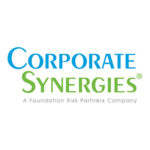Hypertension, or high blood pressure, increases the risk of heart attack, stroke and heart disease and is among the most common—and costly—preventative chronic conditions. A recent international study found that over half of all people living with hypertension didn’t even know they had it. While the United States’ results were better than most countries, a significant portion of people still live with uncontrolled or undiagnosed hypertension. Preventable illnesses like hypertension are a burden for both the employee and the employer. Employers can help by starting or promoting workplace wellness programs and screening for undiagnosed hypertension.
Costs of Undiagnosed Hypertension
As the study authors reinforce, hypertension is easily detectable and effectively controlled by low-cost treatments.1 However, unless you’re looking for it, it’s often symptomless—that is until something more serious and costly, like a heart attack or stroke, happens. Preventable chronic conditions like hypertension are a major contributor to the costs of health insurance premiums and employee medical claims. Along with diabetes, smoking, physical inactivity, and obesity, hypertension costs US employers $36.4 billion a year in lost productivity.2
Latest Data
According to the study results, over 20 percent of men and 17 percent of women living with hypertension are unaware they have the condition. Of women diagnosed with hypertension, 27 percent are untreated, and of those, just over half have the disease under control. Results for men are similar with 34 percent being untreated and 55 percent with uncontrolled disease.
Many Americans still live with undiagnosed hypertension.
Overall, the United States fared better than most of the world which the authors attribute decades of education campaigns, reduced smoking rates and relatively good access to care, despite an increase in average BMI since 1990.
Interestingly, the proportion living with undiagnosed hypertension was significantly higher in the 30-44-year-old demographic, possibly because detection efforts are targeted at older, more at-risk age groups. Only about half of men with hypertension in the 30-44-year-old group were aware of it; women were only slightly lower.3
What Employers Can Do
The high proportion of undiagnosed hypertension in the youngest studied age group is a reminder for employers to reach all demographics with their wellness programs, even those in younger age brackets presumed to be “healthier.” Early investment and treatment can help reduce health concerns later on.
A workplace wellness program can help identify hypertension and other preventable illnesses and risk factors to help keep employees healthy and manage costs. Initiatives like biometric screenings and health risk assessments can help evaluate employee health and better educate them on risk factors. Despite these benefits, only a minority of employers offer biometric screenings (34%) or health risk assessments (42%).4
Biometric screenings measure vital signs like body mass index, blood pressure and cholesterol which can be predictors of chronic illness. Employees who know their current numbers are more likely to take an active part in managing them, creating better quality of life and lowering their risk of chronic illnesses that can be costly to manage.
Health risk assessments, questionnaires distributed to employees that gauge propensity for healthy living, work with biometric screenings to measure the success of a wellness program and ensure participants are aware of their potential risk for chronic or acute health issues.
In a competitive labor market, a wellness program can help provide added value, improve your workforce’s health and well-being and reduce insurance utilization.5 This recent study shows that there’s plenty of upside to helping employees control chronic conditions like undiagnosed hypertension.
1 The Lancet, “Worldwide trends in hypertension prevalence and progress in treatment and control from 1990 to 2019”
2 Centers for Disease Control and Prevention, “Workplace Health Promotion”
3 The Lancet, “Worldwide trends in hypertension prevalence and progress in treatment and control from 1990 to 2019”
4 Kaiser Family Foundation, “2020 Employer Health Benefits Survey”
5 Kaiser Family Foundation, “2020 Employer Health Benefits Survey”





